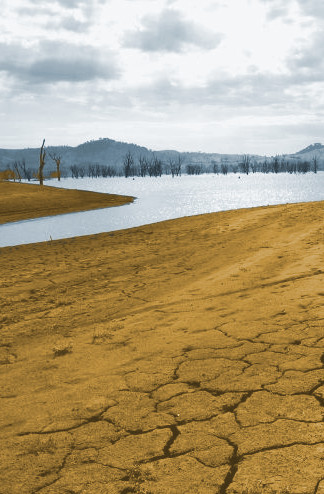Darling flows doled out
 The Darling River is flowing for the first time in two years.
The Darling River is flowing for the first time in two years.
Rain in outback Queensland in January have traversed hundreds of kilometres over largely dry riverbeds, rolling into New South Wales and down to Menindee, where the flow can be controlled.
Authorities first siphoned off some of the poorest-quality water into lakes Tandure and Pamamaroo, then allowed Lake Wetherell to fill enough so that the first pulse of water would be large and of high-quality as it heads down the Lower Darling.
“One of our priorities was to minimise the impact on native fish species, as well as delivering town water and water to long-suffering landholders in the Lower Darling,” says Tony Webber from Water NSW.
“We worked very closely with the Department of Fisheries and local landholders, and the result being there was a near absence of fish kills during that operation.
“I think that's the good-news story that went on behind the scenes.”
When the water made it to Wentworth, the Murray-Darling Basin Authority (MDBA) lowered a weir pool to help flush out the lower-quality water through to be diluted into the Murray.
The result is that Menindee Lakes are now releasing 300 megalitres a day, with plans to drop it to 200 megalitres.
“That's to reach the optimum point of providing a constant flow for the landholders' communities in the Lower Darling, but to hold back as much of this precious water as possible and thereby prolong the benefits to landholders, those communities and the environment,” Mr Webber said.
The authorities say they will keep using lakes Pamamaroo and Wetherell before allowing overflow into the southern lakes.
“We need to store it as efficiently as possible, and that means, where possible, retaining the water in the upper lakes and minimising the surface area, which is the challenge with the Menindee Lakes,” Mr Webber said.
“They are very, very large but comparatively shallow lakes.”
Normally, the MDBA allocates water to South Australia, Victoria and New South Wales, which then distribute their allocations to individuals.
However, the laws governing the river system have an exemption for when the Darling is in drought.
In this case, the Darling's flows are removed from the MDBA's allocations and left to be managed by New South Wales.
NSW Department for Planning, Industry and Environment allocations manager Brian Grahamsays water is assigned in a priority order.
“So if there's an available amount of water, first, you allocate to towns and then domestic and stock users, then you are obliged to provide water to high-security users, and then if there's any water left over, it starts to accrue to general-security water users,” he said.
“The recovery has reached such a point where most restrictions have been eased and water that had been allocated and was inaccessible is now available for use.”
The new water in the Darling will remain outside of the MDBA's control until the Menindee Lakes reach 640 gigalitres.








 Print
Print